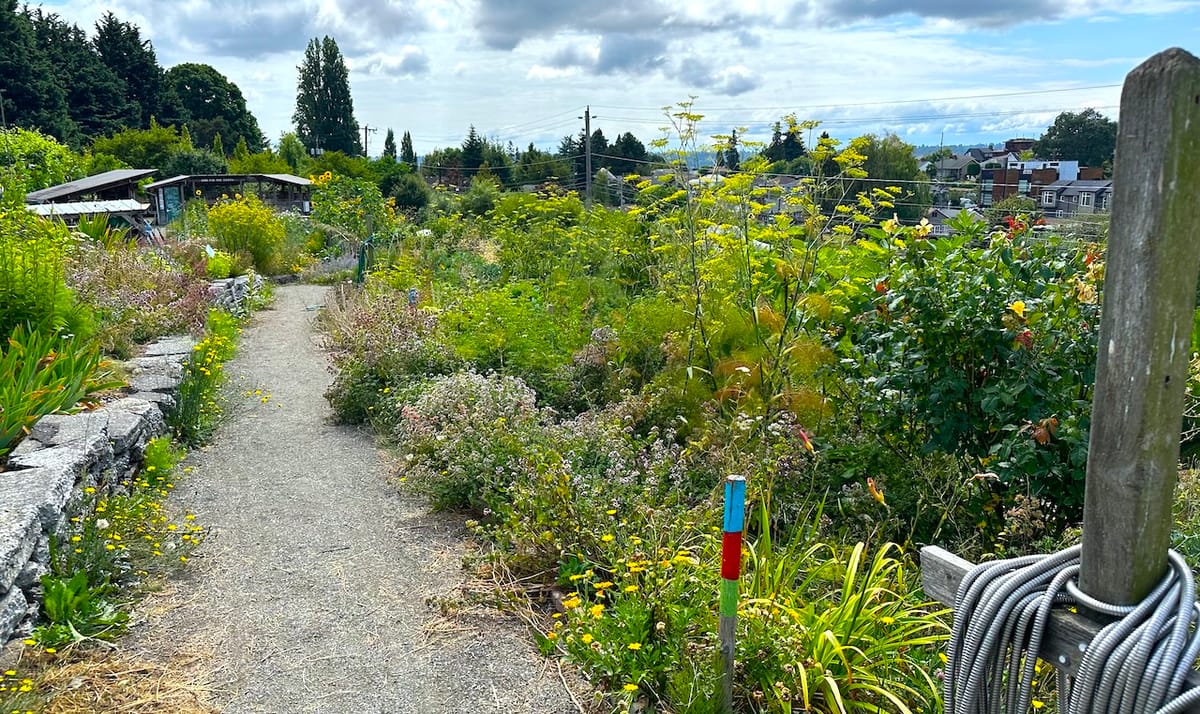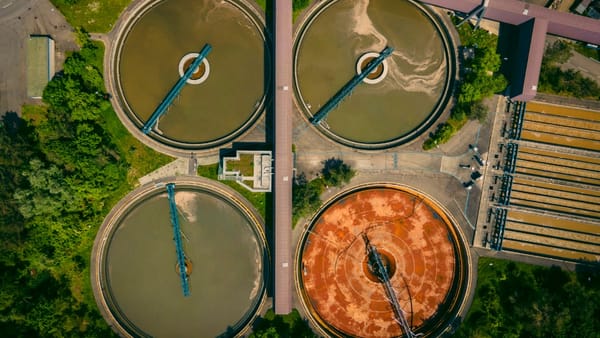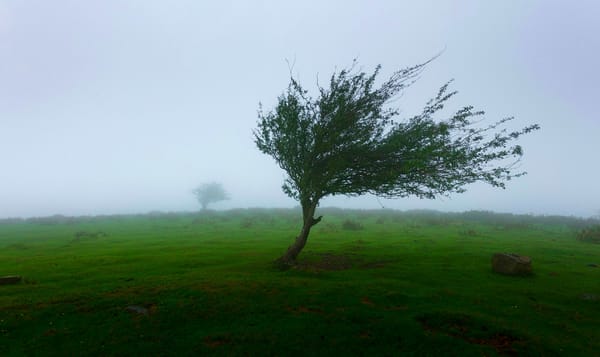the future of food waste
centering people, not waste

Most of the world still recognizes that climate change is real and that it's caused by humans. The fossil fuels we burn get a lot of attention, but that's not the only source for the gases that are cooking our planet. It also comes from food at restaurants and grocery stores that doesn't sell. It comes from food that goes bad in our homes and food that rots in the field. Because of this, many states now have laws that reduce greenhouse gases by banning food waste.
The Environmental Protection Agency (for now) has a scale for the best ways to reduce food waste. Based on their recommendations, the most preferred way to do it is to cut down on the food we produce. If nobody's going to eat it, we shouldn't grow or process it. If we already have food and don't need it, donate it for someone else to use. If we can't do that, feed it to animals, compost it, or mix it back into the earth. The worst option is to dump food down the drain or send it to the landfill. These latter options create the highest amount of methane and other gases that heat up the earth. Food waste bans encourage or force producers to choose one of these better options.
How effective are state laws in places where they enforce these better options? A recent study analyzed the benefits of 5 state-level food waste bans. Its authors were Fiorentia Zoi Anglou, Robert Evan Sanders, and Ioannis Stamatopoulos. Two of the authors work at my alma mater, UT Austin, which is how I got a free copy of the article (I will say this once: hook em!).
The authors studied results from the first five states that banned food waste. Of these states, only Massachusetts reduced the amount of food waste it sent to landfills. How did Massachusetts do it? Anglou, Sanders, and Stamatopoulos named three main drivers for the state’s success.
- Massachusetts built an extensive network of food waste processors. This made it cheap to send the waste to a nearby compost facility or digester.
- They made it simple to understand the ban. All businesses who reach a standard threshold for food waste must send it for processing. They didn't allow exceptions for any businesses above that limit.
- Massachusetts set a high penalty for businesses that did not follow the ban. They inspect more sites, issue more fines, and go after violators more than any other state.
before it's waste
These approaches worked well to divert food from a landfill to a composting facility. But what about the food that may still be good to eat? The EPA says that we should donate excess food if it's still good to eat ("wholesome," in their vernacular). The donation step wasn't part of the original study I shared above.
When I worked at a food bank, I directed the work of the team that managed our relationships with grocery stores. We also created links between restaurants and places that serve hot meals to people. In my role I went on ridealongs with our drivers picking up and delivering this excess food. I also visited these donors myself, alone and with our team. Most often, I heard a lot of stories from the teams that received donations every day.
Day to day, the quality of the food we got was inconsistent. Sometimes it would be fantastic! A big-box store might have ordered one too many pallets of avocados, so we got a bunch of them to share. Or we'd receive cases of chicken frozen on or just before its sell-by date. Other times, the food we'd get was (to be frank) disgusting. We'd see rotten and wilted produce, expired canned goods, stale baked goods. Sometimes inedible food would come in through our community food drives. A pantry where I once volunteered received a box of cake mix that dated back to the 70s. My opinion: your birthday cake should not be older than you. It's clear that not everyone agrees with me.
If donation is the first step after "don't grow it," why are food donation policies structured the way they are? What would it look like if a ban on food waste valued the people and communities that needed food to eat? We first need to understand the ways food waste policies currently deprioritize community.
putting donors first
Laws at both the state and federal levels benefit the donor first. The simplest example is how we reward donors for their food. Donors receive a tax write-off for the food they donate. The value of the write-off is the lower of two numbers. They can write off the fair market value of the food they donated. Or they can write off twice the value of the cost of the food. Donors receive a write-off for up to 15% of their total taxable income. The quality of the food is not a consideration in how much they can deduct. It also doesn't matter if anyone wants the food they're donating.
Donors are mostly safe from liability if someone gets sick. The Bill Emerson Good Samaritan Act protects donors as long as they don't give food they know is harmful. People credit the Act for the huge amounts of food now donated by corporations. Donors are safe as long as they aren't negligent or intentionally donate bad food. Unfortunately, the definition of "gross negligence" centers a donor's ignorance. Considering some of the donated food I've seen, there's no way the donors didn't know that food was bad. Yet it's hard to prove negligence, and the people who could sue—poor folks and nonprofits—are the least likely to.
Most expenses fall on food banks, not donors. Many donors expect food banks and pantries to pick up the food themselves. This means food banks bear the cost of trucks, train volunteer drivers, and ensure food safety. Volunteers at food banks must sort through and repackage the food that's still edible. Inedible food goes to composting facilities the food bank pays for, not the donors. More food goes to the nonprofits that can afford these costs. This leads to the centralization of food donations to a few big players. That said, local-first donations hurt food banks that operate in food deserts. They have nobody nearby with food to donate.
putting community first
How could this system be different? How could we center the people who can't afford food but deserve it all the same?
Subsidize free food for everyone. We wouldn't need any of this if human needs weren't locked behind a paywall. So many complicated schemes, from free lunch programs to WIC to SNAP, would be a thing of the past. Nobody would need them! People could get the food they want, when and where they want them. An inventory of what people actually want to eat could set future growing seasons. High-nutrition options would no longer be out of reach to all but the wealthiest shoppers.
Direct donations from the store itself. Like the above, grocery stores could donate directly to people in need. Under the current law, donors must give the food to a nonprofit to receive the tax and liability benefits. A change to those laws would mean that folks can get food while it's still in great shape. We also wouldn't have to worry about food quality or sell-by dates that apply to some shoppers and not others.
Tax write-offs decrease in value as donated product gets older. Right now, donating food past its sell-by date still gives the donor their full deduction. That's food they can no longer sell. So why should they get full price if they donate it? Retailers would get a full deduction if they donated food with a shelf life of, say, two weeks or more. That deduction would reduce to zero the closer they get to the end of the product's life.
Food donations should first go to community-led food banks and pantries. These are sometimes known as by-and-for nonprofits. Donations often go to the organization with the longest relationship with a store. How can we ensure instead that more food goes to people most entwined with the community? Give priority to groups that:
- offers ongoing dialogue and decision-making by food insecure community members;
- performs specific outreach to community members in the area who don't know they can get food;
- act for social and narrative change beyond the distribution of food.
the steps ahead
Climate change is already here. The effects of a changing climate will burn fastest through the people who can afford it the least. We can't count on meaningful progress at the federal level to stop or even slow it. State-level mandates, in the states that pursue them, may be all we'll get in the years ahead. Lawmakers know that reducing wasted food is essential to curbing emissions. We need to make sure they treat low-income people as more than just another landfill.



